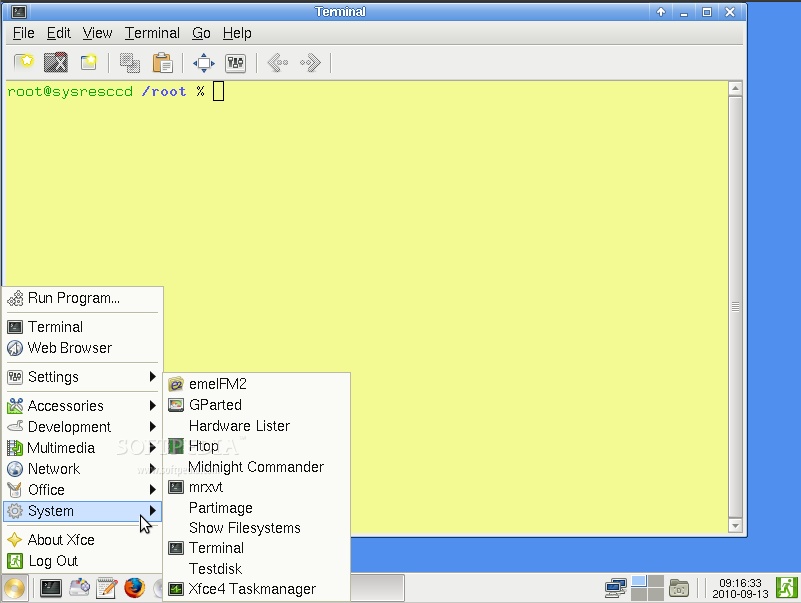

- INSTALL NTFSPROGS ON SYSTEMRESCUECD HOW TO
- INSTALL NTFSPROGS ON SYSTEMRESCUECD INSTALL
- INSTALL NTFSPROGS ON SYSTEMRESCUECD WINDOWS
My current NAS drive (on its last legs, I think) is not only miserably slow, but more problematic, just quits in the middle of file copy operations. With it being a USB3 drive, I assume that will help somewhat? Although I'm much less concerned about speed than I am reliability. *It sounds like the primary concern is managing expectations for transfer speed. Wow, thanks so much! I really appreciate all the info! A handful of follow-up questions, if you don't mind? I/O size (minimum/optimal): 512 bytes / 512 bytes Sector size (logical/physical): 512 bytes / 512 bytes
INSTALL NTFSPROGS ON SYSTEMRESCUECD WINDOWS
Whenever I need anything, I just boot windows and copy the data. My windows is on the SSD, so it doesn't affect anything (I guess). Ok, to be clear: I've got 2 hard drives, 1 SSD (128GB), 1 SATA (320GB) with 2 partitions (Downloads 160GB, DATA 160GB). Moving 150GB of files with that slow hard drive would be a day, I'd like to avoid that.ītw, I can't access the files with cd at terminal.

Recovery is very expensive.Thanks! Yes it's NTFS, and I've got a copy from these files, but I want to access the HDD though.
INSTALL NTFSPROGS ON SYSTEMRESCUECD INSTALL
Incidentally, whenever you install a new operating system, or just upgrade one you already have, whether it is Windows or Linux or whatever, you should have a complete backup of all your must-not-lose files on a different drive that is not connected to the one you are working on. However, given your apparent lack of experience with linux, that is probably more risky than trying to mount it from Windows first. If you want to recover the data on this drive (movies, music etc) your best bet may be to put the drive in an external usb enclosure, and see if you can mount it on a Windows pc, since it is (apparently) using the Windows "NTFS" format.Īlternatively you could try and boot from System Rescue CD and see if you can run a repair to recover the partition. I assume you did not reformat this drive (or any partitions on it) when you installed fedora to the first drive. "302591184" is not an error code, it's the numerical value for the last sector, which is apparently unreadable for one of the suggested reasons (or perhaps something else). using the "cd" command (to change directories), and "ls" to list files inside them. If for some reason the desktop fails to load, you can still browse the disk from the command line by e.g. The "explorer" as you call it (or file browser) is just a way to browse files from the graphical desktop.

If you can boot your computer, the drive your OS is on is "usable". Last edited by easyx 12th September 2013 at 06:38 PM.

INSTALL NTFSPROGS ON SYSTEMRESCUECD HOW TO
(udisks-error-quark, 0)I don't know how to handle that, I can't find anything under the error code 302591184.Īnd is it possible that when I start my OS the HDD is ready to use, without opening it in the "explorer"?ĮDIT: If you're here because of Google: problem was an SFS partition, I formatted the whole disk and that's it. dev/sda, not /dev/sda1)? Or the other way around? Maybe the wrong device is used? Or the whole disk instead of a The device '/dev/sda2' doesn't seem to have a valid NTFS. Or the NTFS boot sector is corrupt (NTFS size is not valid).įailed to mount '/dev/sda2': The argument is not valid. Or the partition table is corrupt (partition is smaller than NTFS), Or a wrong device is tried to be mounted, HINTS: Either the volume is a RAID/LDM but it wasn't setup yet, Code: Error mounting /dev/sda2 at /run/media/user/part1: Command-line `mount -t "ntfs" -o "uhelper=udisks2,nodev,nosuid,uid=1000,gid=1000,dmask=0077,fmask=0177" "/dev/sda2" "/run/media/user/part1"'Įxited with non-zero exit status 12: Failed to read last sector (302591184): The argument is not valid.


 0 kommentar(er)
0 kommentar(er)
